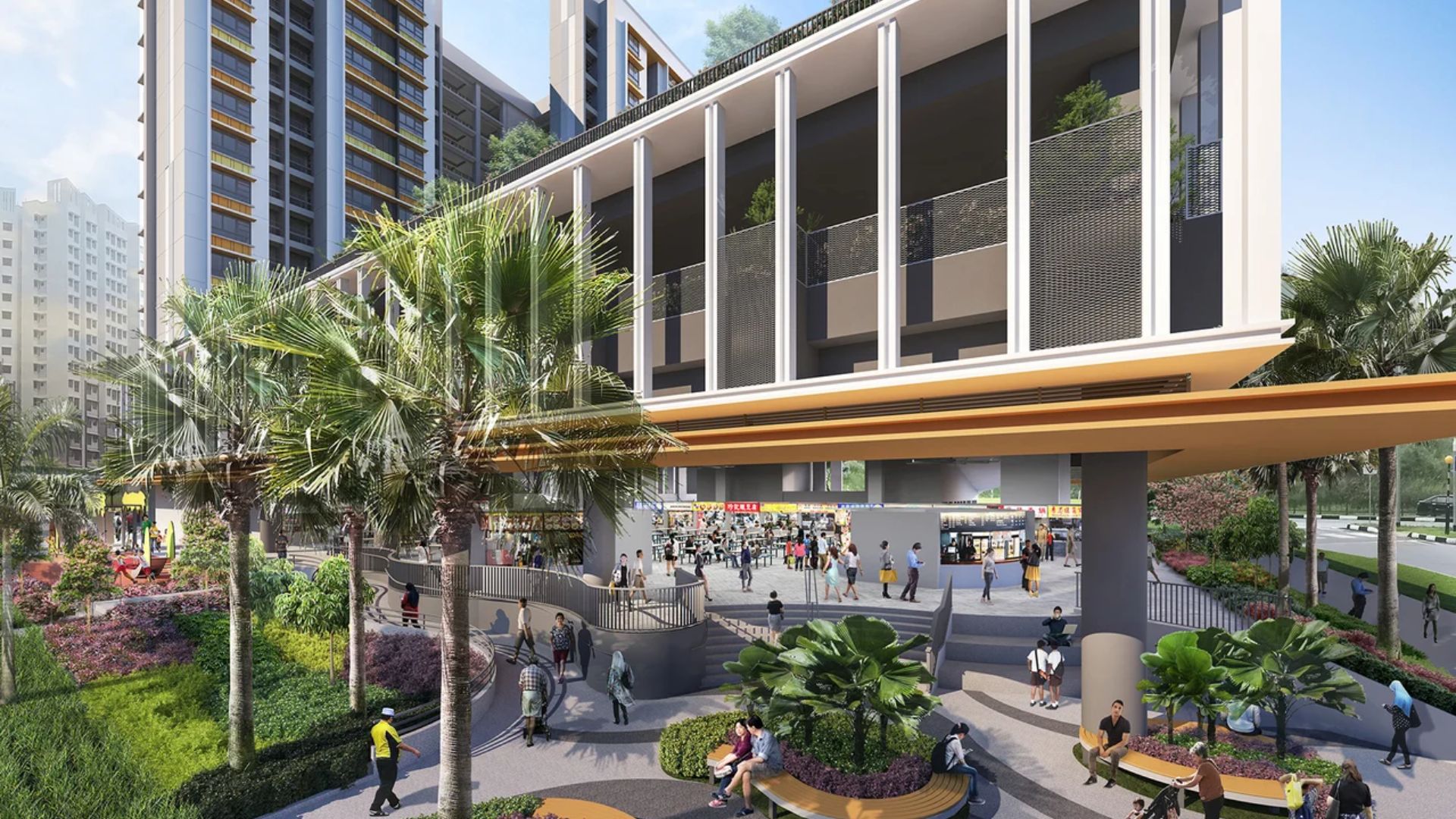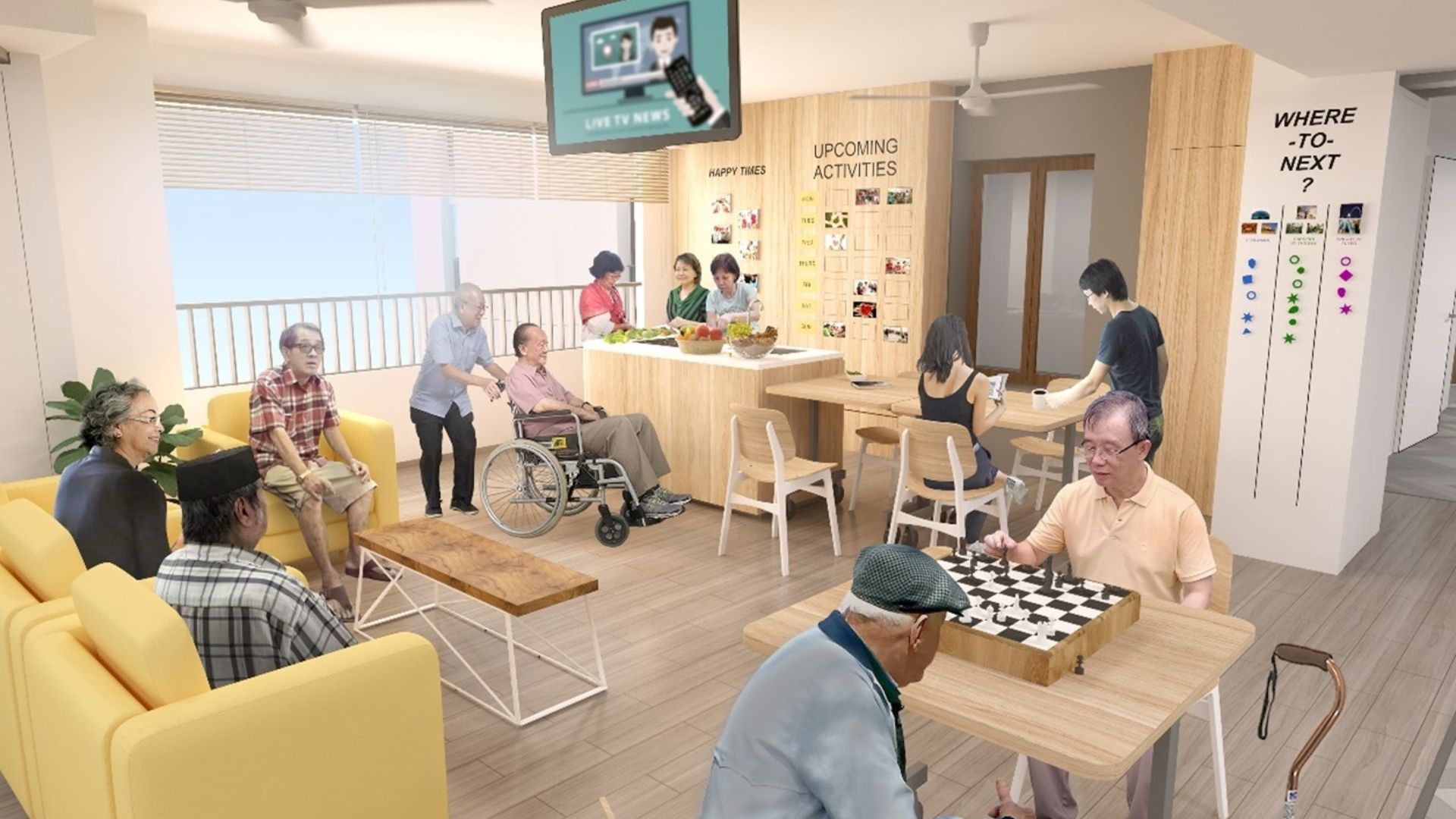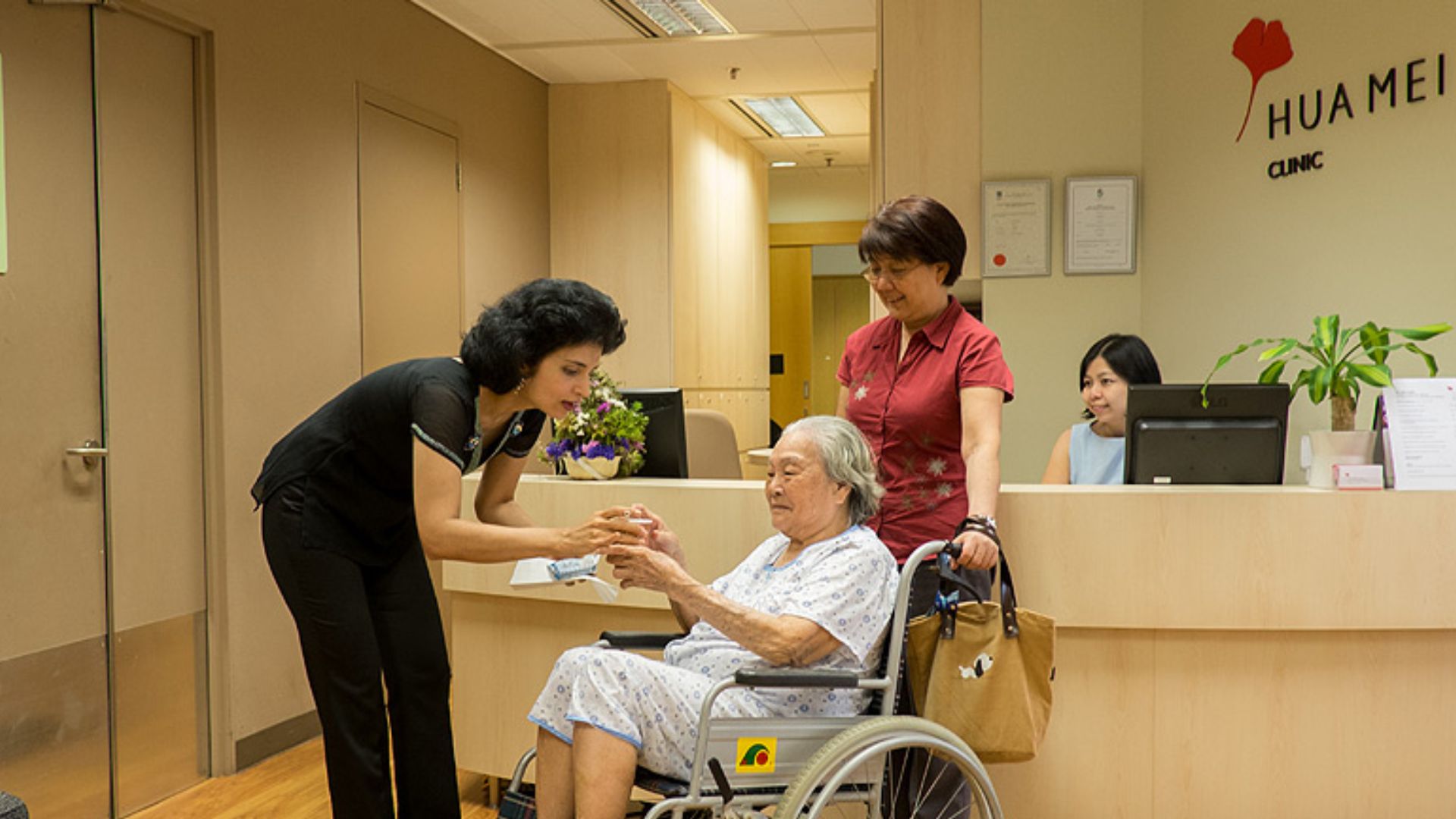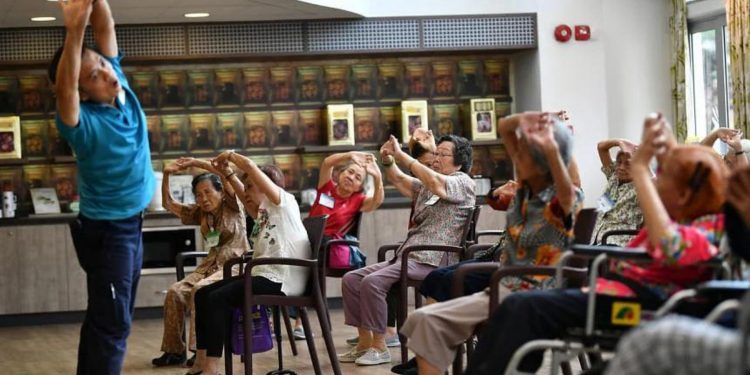To help Singapore’s elderly population age in place, the Government is looking into various alternatives to provide adequate, affordable and comprehensive care for this rapidly rising demographic.
Home is where the heart is
According to the findings of the latest Sample Household Survey of 2018, more elderly residents of Housing Development Board (HDB) flats hope to stay and grow older in their existing homes. The survey found that 86 per cent of elderly residents intended to continue living in their existing flats, up from the 80 per cent in 2013.
They had “found it comfortable or had an emotional attachment to it, having developed fond memories of the time spent with their family in the flat”, the HDB survey said, adding that “the elderly continued to show a strong preference to age in place”.
More elderly residents, 46.2 per cent in 2018 compared to 37 per cent in 2013, also felt that the ideal living arrangement would be to live in their own homes, while having family members or domestic helpers care for them.
About 92.3 per cent of households surveyed then added that they would like to continue living in HDB flats in their old age.
“Of these, close to half preferred to live in three-room and smaller flats, … citing ease of maintenance and the need for less space, as their household size decreased in their later years,” the HDB survey found.
It added that those who preferred five-room and executive flats wanted more space for their family members to live together or to hold gatherings.
The key principle adopted in housing and land use policies for seniors is “ageing-in-place” – allowing seniors to grow old in the home, community and environment that they are familiar with, with minimal change or disruption to their lives and activities.
Improving home care
In line with this, a Code on Barrier-Free Accessibility in Buildings was enacted in 1990 to ensure that new buildings conform to a set of standards on barrier-free provisions. HDB studio apartments equipped with elder-friendly fittings and features were also introduced in 1998 as a customised housing option for the elderly.
Also making flats elder-friendly, the Lift Upgrading Programme was introduced in 2001 to allow lifts to be provided at every level of high-rise HDB blocks, where feasible.
The Land Transport Authority (LTA) also got into the act and has been retrofitting existing Mass Rapid Transit (MRT) subway stations since 2000 to ensure there is elder accessibility. Low-floor, step-free and wheelchair-accessible buses were also introduced and are eventually available on all public buses.
Property agent David Keong, 40, says, “The studio apartments today are well-designed and have many features for seniors who live alone. While they were initially well-received, the popularity has waned in recent years, partly due to the small size and also the rising number of seniors who need assistance in home living.”
So what has happened to the “granny flats” — the ones formed by combining two units into a larger one, designed for multi-generational living?
Mr Keong says, “There are not many available now, and those that are available are too large to be maintained by single seniors or elderly couples.”
With singlehood and smaller families getting more common, “relying on children as caregivers may not be feasible”, says Professor Paulin Straughan, director for the Centre for Research on Successful Ageing at the Singapore Management University (SMU).
To better manage the lack of familial support, seniors living at home can use services such as tele-consultation and ad hoc medical support, while seniors who are more frail may need more sophisticated real-time remote monitoring in designated facilities.
Living in community
Assisted living facilities, where residents are not wholly reliant on caregivers, provide a “tailored level of support between that of community-based care support and nursing home care”, says Associate Professor Wee Shiou Liang of the Singapore Institute of Technology’s Health and Social Sciences faculty.
Assisted living addresses the preference that Singaporeans have for ageing in their own homes, as various government and academic studies have found.
The 2018 Sample Household Survey showed that more than 40 per cent surveyed were willing to live at assisted-living facilities should there be a need to, so that they could have access to professional medical and nursing care.
These findings come as the proportion of elderly HDB residents, aged 65 and above, rose from 9.8 per cent in 2008 to 16.5 per cent in 2018.
“As far as possible, most will try to avoid institutionalisation, that is, entering a nursing home or facility,” says Prof Straughan. “So moving forward, we should turn towards a model where facilities are situated in communities to support elderly residents in the enclave.”

In February 2021, the HDB launched the Community Care apartments (CCAs) in Bukit Batok. The apartments target home buyers aged 65 and above who want to live on their own but receive care if needed.
Residents subscribe to a basic service package, which gives them access to 24-hour emergency monitoring and response, basic health checks and simple home fixes. These will be facilitated by an onsite community manager, who will also organise social activities.
At the National Development Ministry Committee of Supply debate in March, its Minister of State, Associate Professor Muhammad Faishal Ibrahim, announced the launch of the second CCAs pilot in Queenstown.
Mr Lee Sze Teck, Huttons Asia’s head of research, told CNA in December 2020 that these apartments are a “step up” from the two-room Flexi flats, which are short-lease units with senior-friendly features.
He added that they are one rung below nursing homes or dedicated institutions, providing variety for seniors who find themselves between different stages of their lives.

Dr Angeline Seah, head of Geriatric Medicine at Khoo Teck Puat Hospital (KTPH), said the model “plugs the physical, cognitive or psychological needs of seniors”.
She told CNA that this housing model would also remove the potential stress of having to hire a foreign domestic worker or having to adapt to life with a housemate in rental flats.
She added that the extra “a la carte” services, such as personal care or meal delivery, also create flexibility in matching the needs of different people who live in the same block.
But she said that such living poses some challenges, including the fact that seniors may have “varying communication needs” as some of them speak unique dialects or have different communication abilities.
This will lead to “under or over provision of services, misunderstandings between staff or between seniors”, she said.
Also, the elderly may have continence, audio-visual and cognitive issues, which Dr Seah said would have to be dealt with a “clear and well-organised environment with reduced distractions”.
Dr Belinda Wee, director of the Assisted Living Facilities Association of Singapore (ALFA), told The Straits Times that having floors of assisted living units in public housing, instead of an entire block would be a better option.
She believed the focus should not be on building facilities, but on providing care in existing settings, “What we have is lots of buildings. What we don’t have is the software, the care.”
The Ministry of Health (MOH) aims to almost double the number of eldercare centres to 220 and increase their scope of services by 2025.
There are currently 119 eldercare centres, each of which provides a range of services such as active ageing programmes, befriending, as well as referral and care services.
More nursing home beds
Speaking at the Agency for Integrated Care’s (AIC) Community Care Work Plan seminar in June, Health Minister Ong Ye Kung said that each eldercare centre should eventually be responsible for 1,000 to 4,000 seniors. They should also collaborate with community networks such as grassroots, social service offices and general practitioners to address health and social needs, he added.
Noting the challenges of an ageing population, Mr Ong said that by 2030, the authorities plan to increase nursing home capacity in Singapore to more than 31,000 beds. Nursing homes have often been seen as a “last resort”, not least given Singapore’s traditional emphasis on the family as the first line of support.
The future may yet come up with eldercare alternatives that can combine the best of the assisted living and home care platforms.

The Tsao Foundation has two projects linked to looking into successful ageing — The Community for Successful Ageing (ComSA) @ Whampoa and the Hua Mei Centre for Successful Ageing (HMCSA).
ComSA@Whampoa is a community-wide approach to forge an integrated system of comprehensive programmes and services with the aim to promote health and wellbeing over the life course, and to enable ageing in place.
ComSA@Whampoa came about when the Tsao Foundation was invited by the City For All Ages (CFAA) Whampoa to participate in their vision of catalysing community action to create an elder-friendly neighbourhood. This generous opportunity granted by Whampoa’s grassroots organisations and the Ageing Planning Office (APO), Ministry of Health sparked the momentum for a series of developments and budding partnerships that will continue to see the Implementation of ComSA’s essential ‘community-wide approach’.
The impetus for ComSA comes from insights into the needs and aspirations of older persons and the community resources available to their continuing healthcare and personal growth.
The Hua Mei Centre for Successful Ageing (HMCSA) is a one-stop, first-stop primary healthcare provider that delivers team-managed medical, social, and psycho-emotional care primarily to adults aged 40 years and above living in the community. In addition, the staff offer support and guidance to their caregivers.
HMCSA is an integrated collective of various community aged care service models that the Tsao Foundation has pioneered since 1993. The HMCSA practises person-centred, holistic healthcare with the aim to enable individuals to optimise their health and well-being across the life course, and to age at home and in the community.
Clients of HMCSA can consult at more than one clinic or programme at the same time, or transfer from one to another as their needs change over time.
RELATED: Ageing in place: Are our elderly financially secure enough to do so?
Join the conversations on TheHomeGround Asia’s Facebook and Instagram, and get the latest updates via Telegram.














